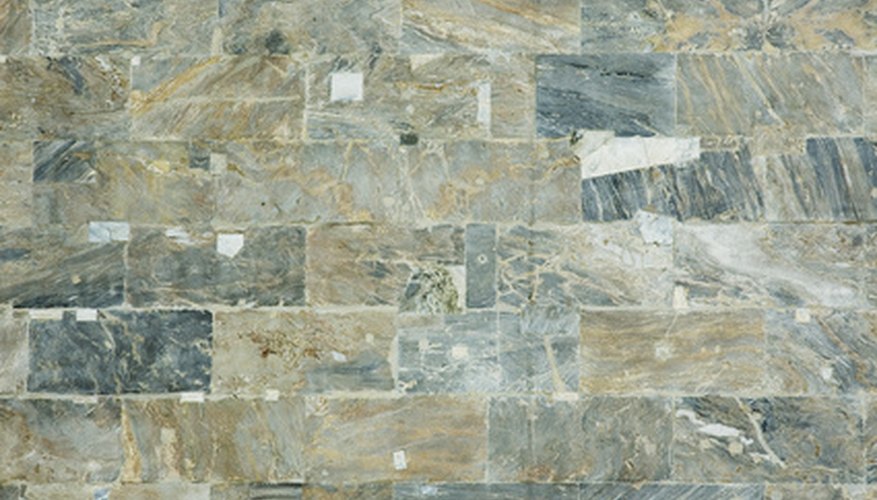To paint marble tile you must employ specific preparation and application strategies to avoid a finish that will chip and peel. Because paint doesn't stick well to marble tile, you must abrade the surface to promote adhesion. In addition, instead of applying a standard acrylic latex floor paint, you should coat the surface with a specific type of primer and paint to obtain a durable finish capable of standing up to a large amount of duress.
- To paint marble tile you must employ specific preparation and application strategies to avoid a finish that will chip and peel.
- In addition, instead of applying a standard acrylic latex floor paint, you should coat the surface with a specific type of primer and paint to obtain a durable finish capable of standing up to a large amount of duress.
Scrub the marble tile with soap. Rinse the surface thoroughly and allow it to dry before continuing.
Abrade the marble tile by sanding it. Load a palm sander with 200-grit sandpaper, and sand the tile in a circular, clockwise motion.
Cover areas you do not want painted with painter's tape.
Screw the roller frame into the extension pole, and slip a polyester roller cover onto the frame.
Apply a coat of oil-based primer to the marble tile, using the roller.
Allow the primer to dry for two hours.
Apply a coat of oil-based paint to the primed marble tile, using the roller loaded with a fresh, clean polyester roller cover.
TIP
Clean all painting tools with white spirit. Prime and paint any areas inaccessible to the roller, using a 2- to 3-inch oil-based paintbrush. If you are painting marble tile on a fireplace, you do not need to use a roller extension pole. Soap can interfere with primer adhesion. Be sure to rinse the marble tile thoroughly.
WARNING
Never coat marble tile with acrylic latex floor paint, or the finish will peel. Do not paint over marble tile until it has been primed with an oil-based primer. Do not attempt to primer over marble tile that hasn't been abraded with sandpaper.
